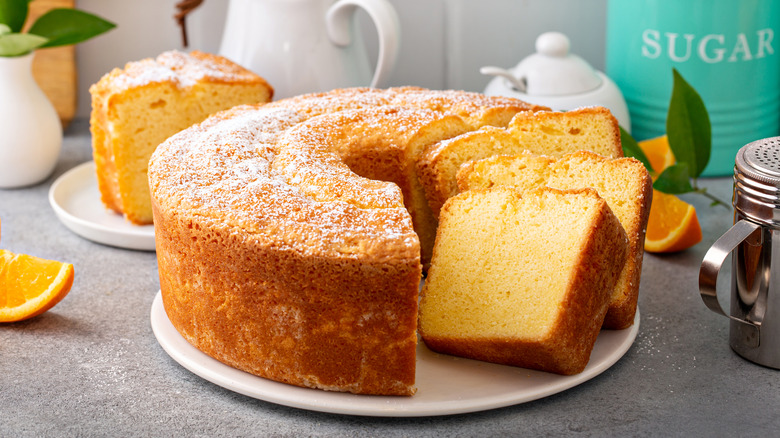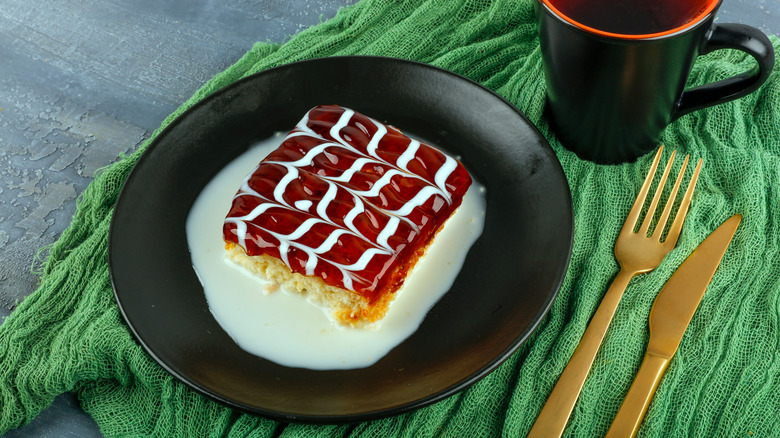The Risk You Run When Soaking Butter Cake
When we think of butter cake, we think of a cake that's rich and moist — and rightfully so. That being said, the technique for making a moist cake without ending up with a soggy final result can prove to be a bit of a challenge.
As you might guess from its name, butter cake uses a lot of butter in its recipe, but it's also commonly soaked in a butter sauce. Between these two steps, it's easy to oversaturate your cake, with its dense internal structure unable to hold up to the weight of any additional liquids. In other words, most butter cake styles already have far fewer air pockets than regular cakes, which means they have little room for retaining moisture.
That being said, if you choose to forgo soaking your butter cake in a sauce, you run the risk of your cake being too dry for its density. This is especially likely if you're eyeballing measurements rather than following a strict recipe, as butter cakes are very finicky.
Sponge cakes take to soaking better than butter cakes
While butter cakes don't necessarily take too kindly to soaking in any kind of sauce, sponge cakes are much better suited to this process. These kinds of cakes use whipped eggs to give them an airier structure, meaning they can be drier and have more air pockets than the denser butter cake.
Being that sponge cakes have a strong enough structure and the space to take in moisture, they can easily be upgraded by saturating them in a sauce or syrup. You can use a homemade simple syrup for the most basic soak, but you can also use juice, coffee, milk, or liquor. Come on, a tiramisu cake soaked with an espresso sauce — does it get any better than that?
At the end of the day, the best way to determine whether or not you apply a good soak to your cake is to consider the cake's original texture. If it's already dense or moist, a soak might push it too far. If the cake is airy or dry, applying some liquid might be a good move.

